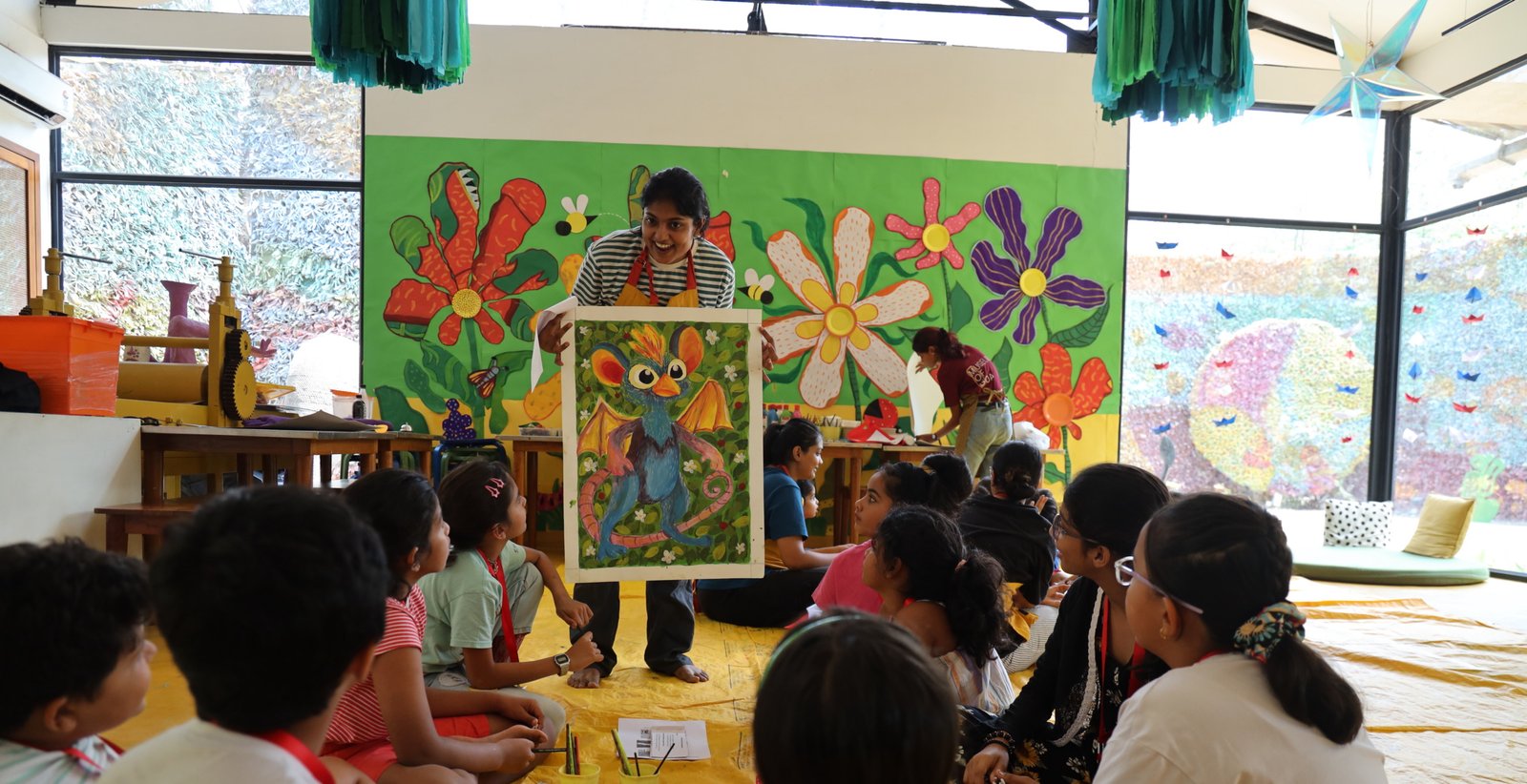The Bigonormous Art Summer Camp was a multidisciplinary art education program designed for kids aged 4 to 14 years, encouraging their spatial imagination, narrative-based learning, and group creativity. In order to investigate the connection between scale, identity, and expression, the camp was designed as an experimental pedagogical model that combined narrative frameworks, large-format art-making, and collaborative practices.
Rethinking Scale in Children’s Artistic Development
“Bigonormous,” a portmanteau (a word formed by blending parts of two or more words, combining both their sounds and meanings) of “big” and “enormous,” refers to a way of thinking rather than merely a scale. Based on this idea, the camp was designed to encourage kids to think creatively, express without fear, and question their own preconceptions about form, proportion, and inventiveness.
Narrative Framework
To root the camp in narrative pedagogy, the mascot Mr. Bigo was introduced, a gentle giant from an island in the clouds who always felt out of place among his miniature friends. The story of Mr. Bigo served as both a metaphor and a mirror, like many children navigating their identities, Bigo felt like a misfit until he saw the Children’s Art Studio, where children were making “big” things. Inspired by their creativity, he finally found belonging and joy. This backstory served as an emotional scaffold, encouraging children to connect personally with the camp’s purpose. Being a misfit is only one aspect of Bigo; another is realising that everyone has a different background. Some people have single parents, some have disabilities, and some may come from comfortable, privileged backgrounds, while others may not. It serves as a reminder to show empathy for one another and to accept individuals for who they are, regardless of their background.
The camp engaged 30 children of various ages (ages 4 – 14), with a differentiated instructional design responsive to their age, ability, and cognitive capacity. The methodology was grounded in various co-creative learning theories, prioritising process over product and participation over performance. Each day’s module addressed a unique dimension of “scale”, using various materials and stories to ensure engagement with the central theme.
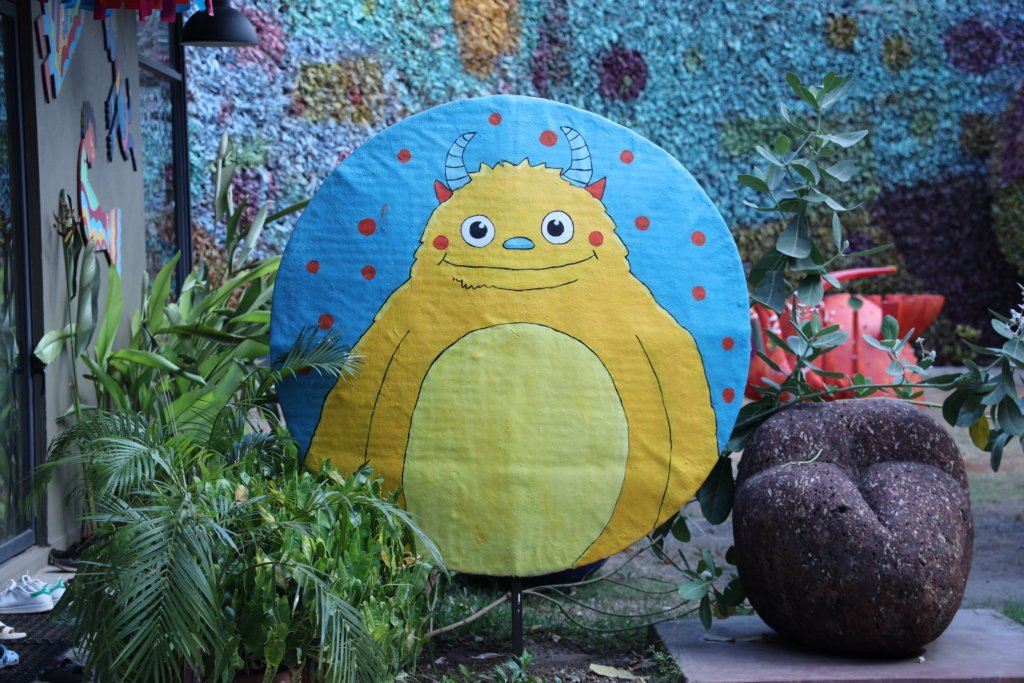
Activities
The Big Book of Creatures
The Big Book of Creatures was a collaborative activity in which kids came together to create a big book of imaginary characters. This was done on a large-format paper individually and combined together to form a book. Each creature reflected some unique traits, from special abilities, preferred habitats, diets, and personalities. Through this exercise, children were able to externalise their inner narratives, offering glimpses into their imaginative landscapes and beings.
The younger kids were given pre-cut shapes to help them navigate the large page and were encouraged to create soft, cuddly creatures. Meanwhile, the older children designed animals based on their personal strengths and imaginative abilities.
“My animal is called Cheekok. It’s a combination of a peacock and a cheetah, with colorful peacock feathers and the face of an owl. He can run fast and see at night. Cheekok is a night guard who watches over everything while others sleep.”
A 6-year-old participant in the camp
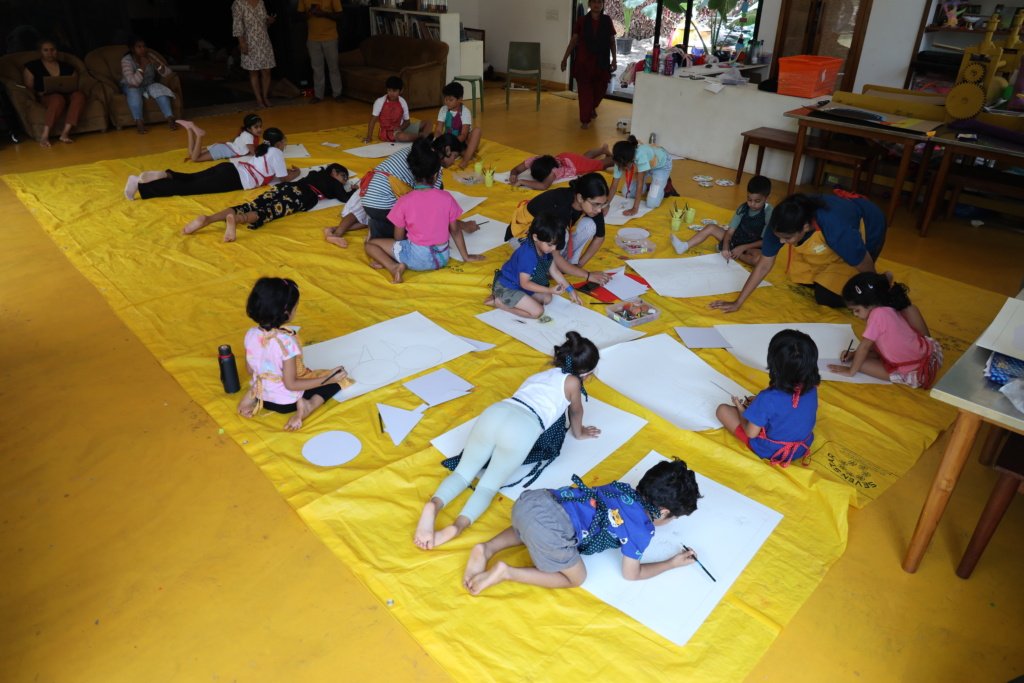
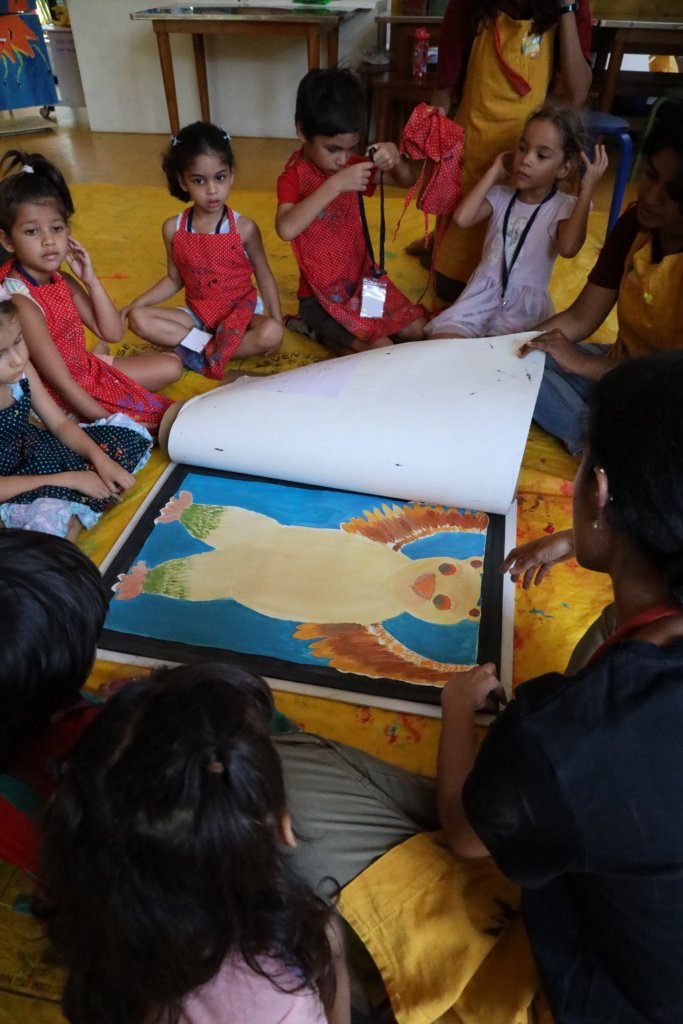
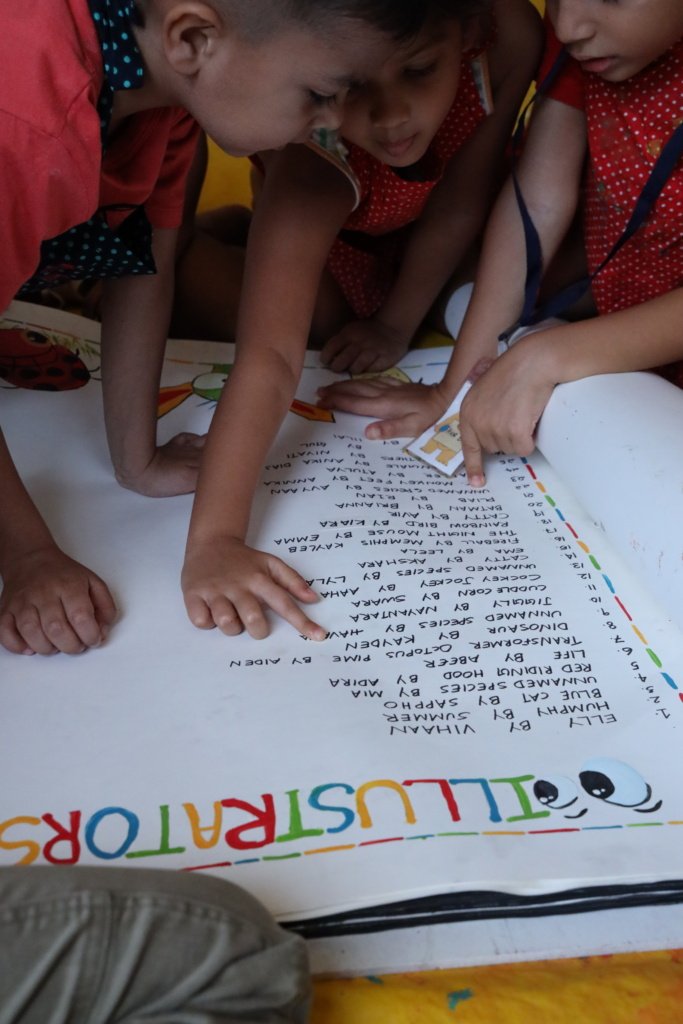
Teapot-o-pomous: The Monster Sculpture
Teapot-o-pomous was designed based on a narrative of a large, monstrous sculpture shaped like an octopus. Teapot-o-pomous was imagined as an octopus who accidentally got stuck inside a teapot. He transformed into a teapot-shaped octopus as he grew up. The activity involved painting the large sculpture and adding wooden eyes to it. This collaborative sculpture emphasized playful techniques—splashing, throwing, decorating, and simply having fun. Through this process, the idea of “transformation through scale” emerged, where small individual actions contributed to a larger, evolving form.
More importantly, the activity was intended to help children understand that creatures come in all shapes and sizes and that every character and personality is shaped by the environment in which it is raised. In the course of the activity, the participants also developed an understanding of shared space, learning to engage collaboratively rather than focusing solely on individual expression. The exercise encouraged flexibility and mutual respect in the process.
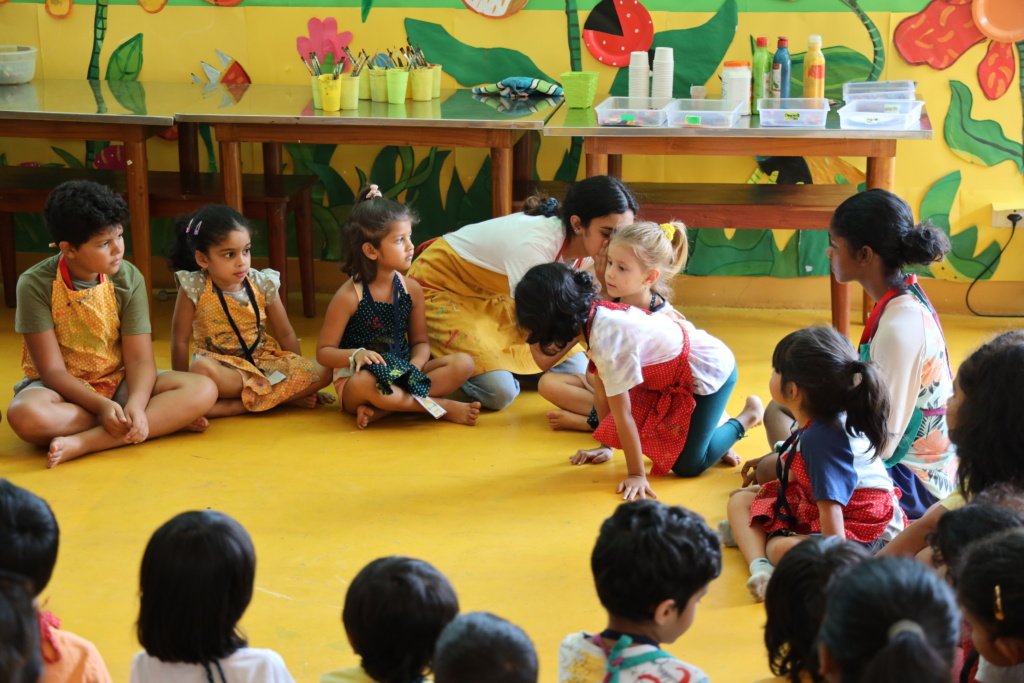
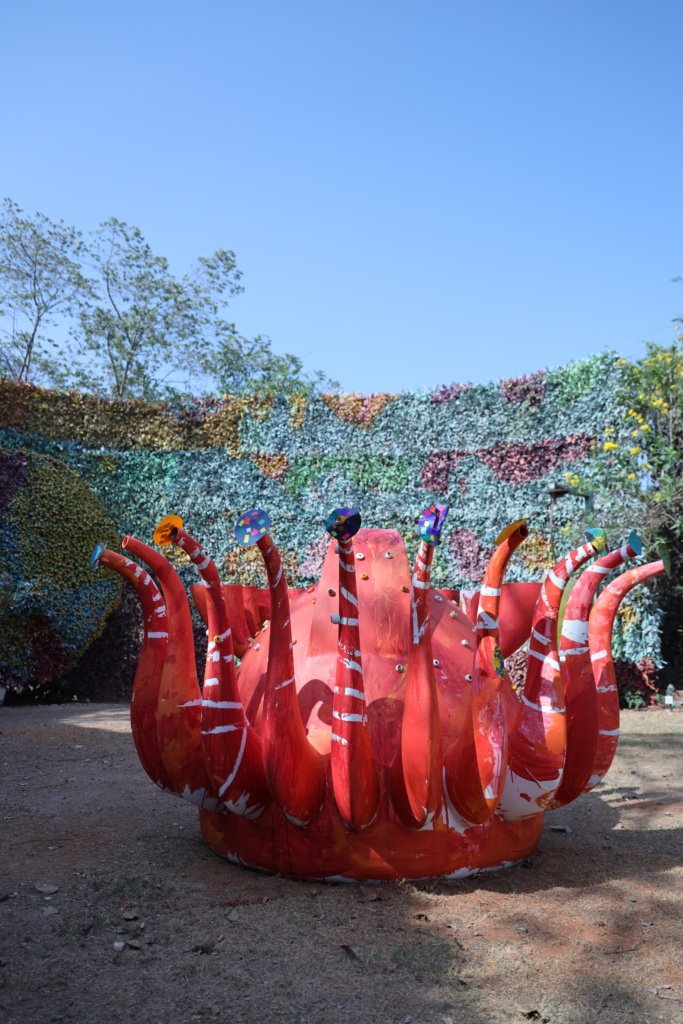
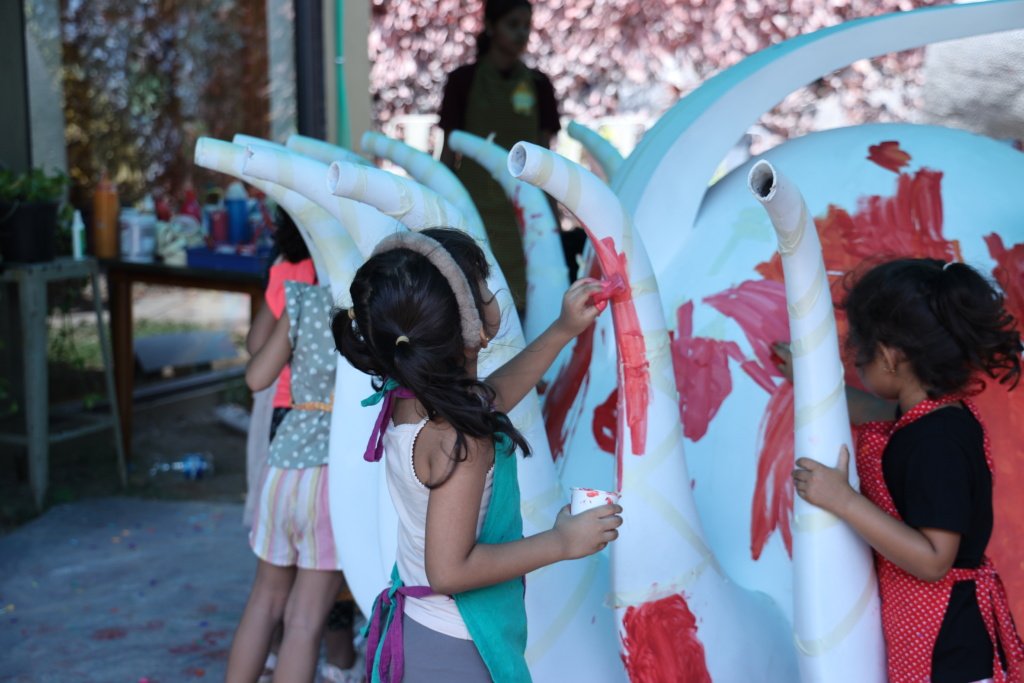
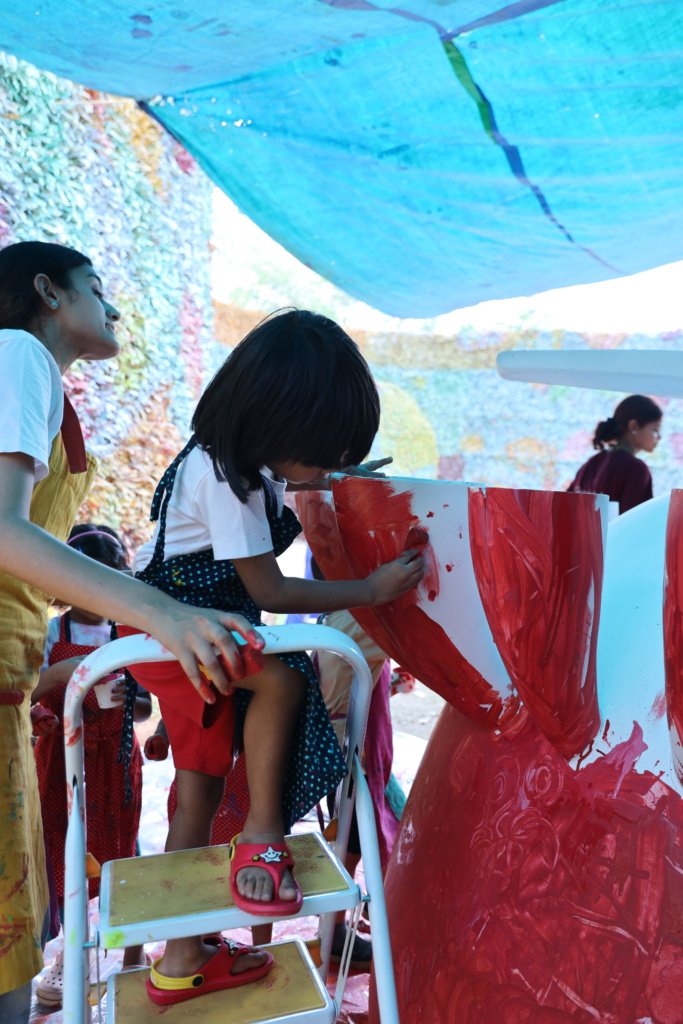
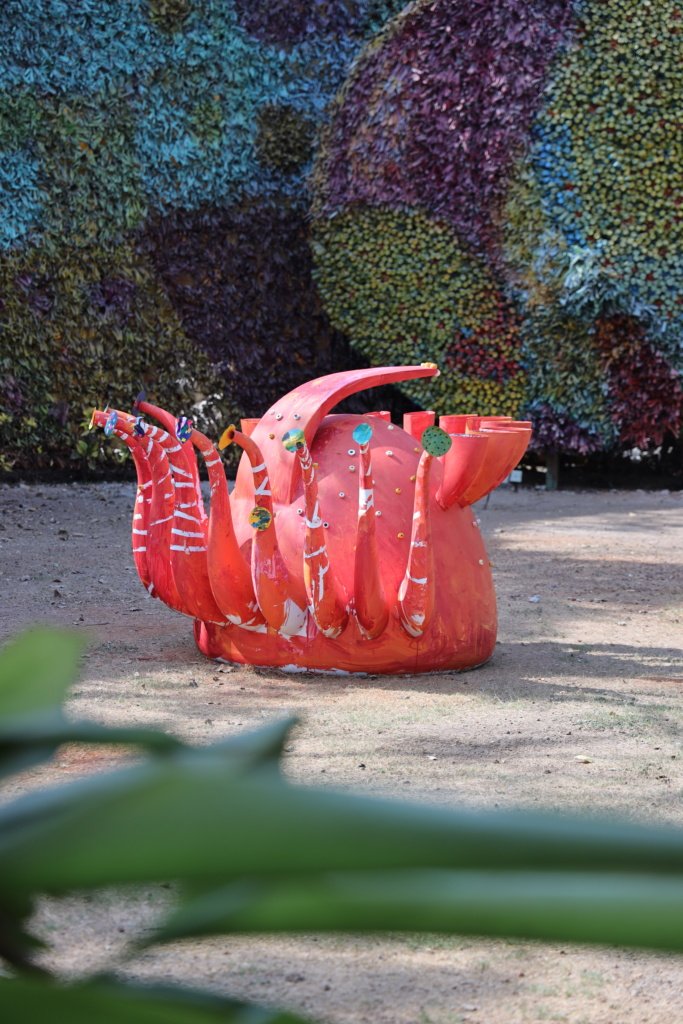
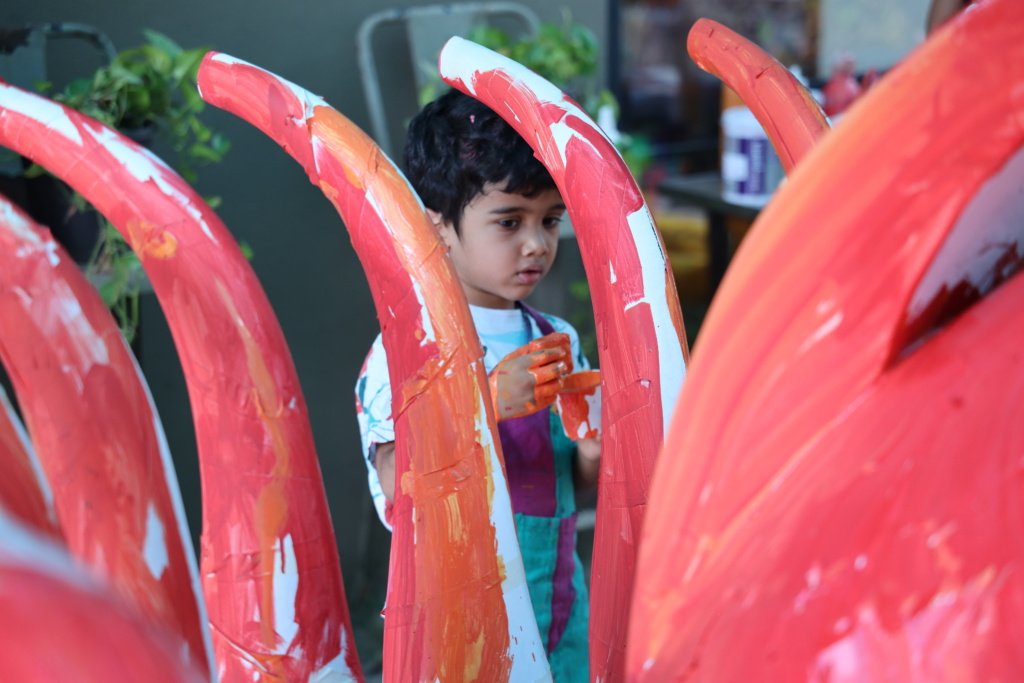
Match Me If You Can: Rotational Exquisite Corpse
Adapted from the technique of the exquisite corpse, this day of the camp was based on three rotating pole structures on which children contributed creature parts, blind to their peers’ prior contributions. Exquisite Corpse is a collaborative drawing exercise rooted in Surrealist art practices, where multiple participants contribute to a single figure without seeing the preceding sections. Each pole has three rotating cubes, in which kids paint the head, torso, and bottom part of the body. This allowed for unexpected, hybrid forms to emerge. This session was collaborated with Shruti Narayan, a senior art educator.
“My creature has the head of a toucan and the body of a kangaroo. Inside her pouch, she carries a baby. She can even swim with her magical mermaid tail!”
A 7 year old participant in camp
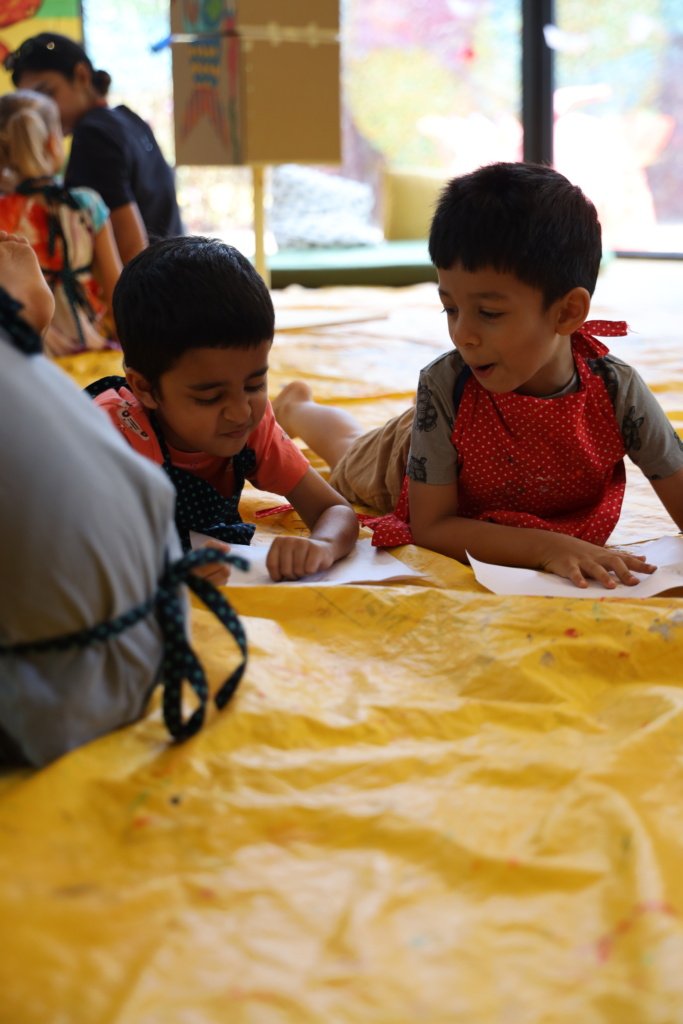
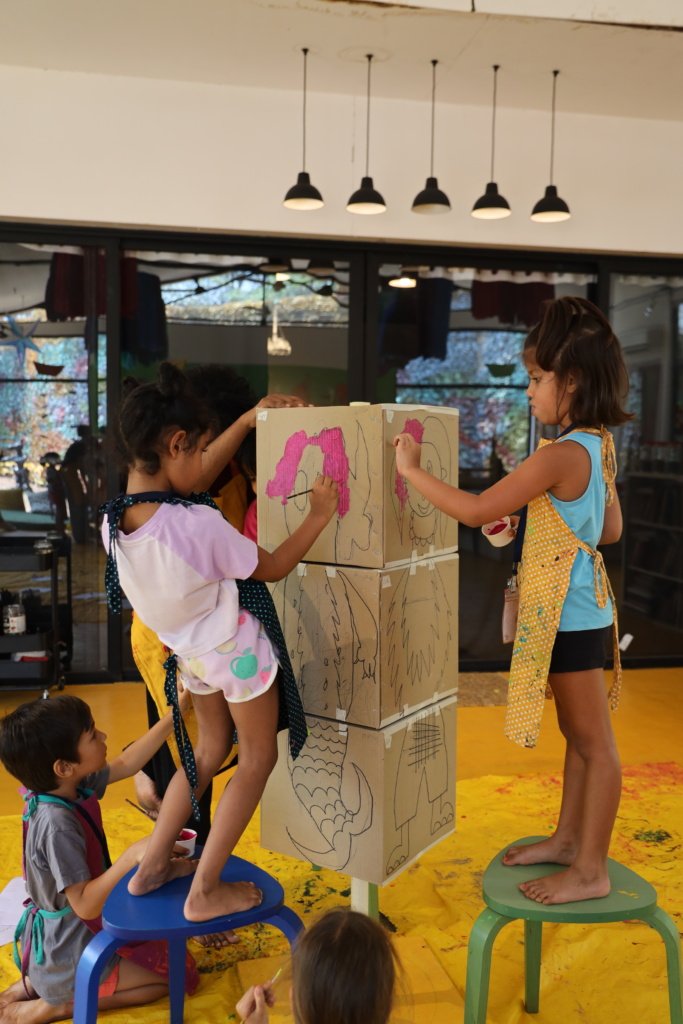
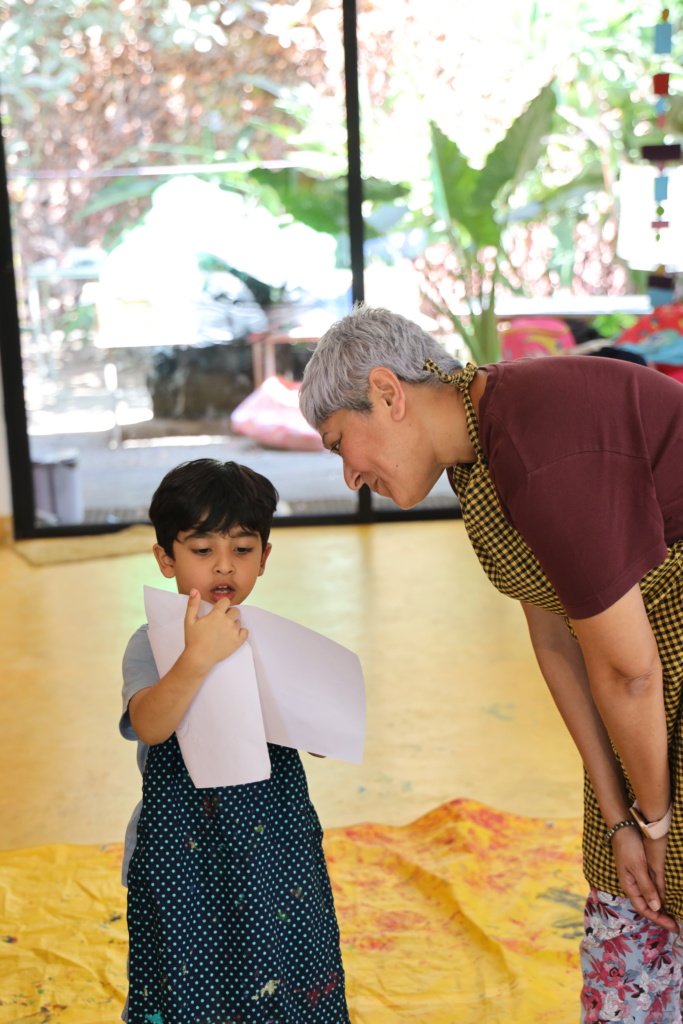
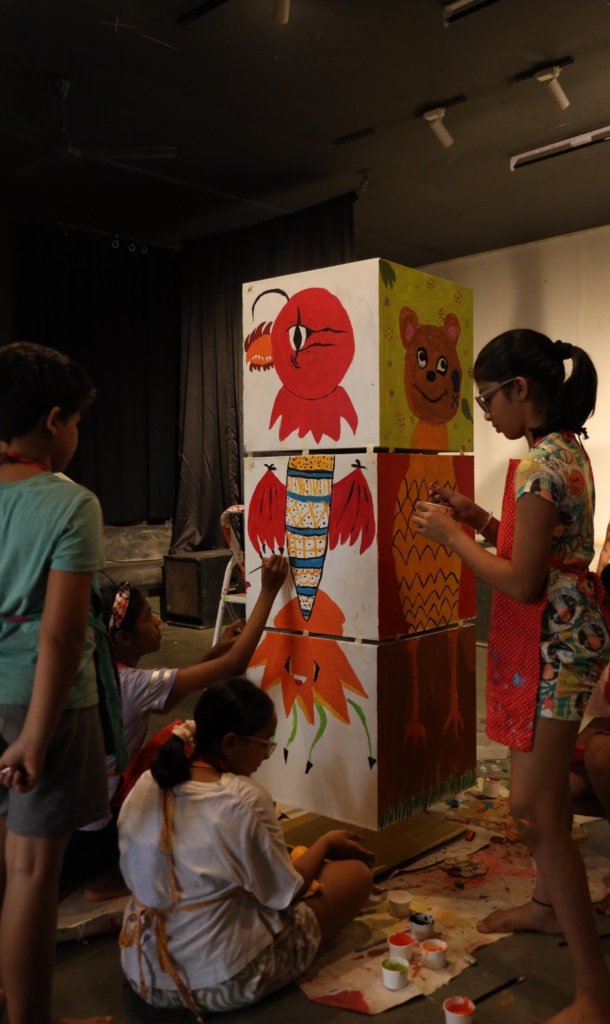
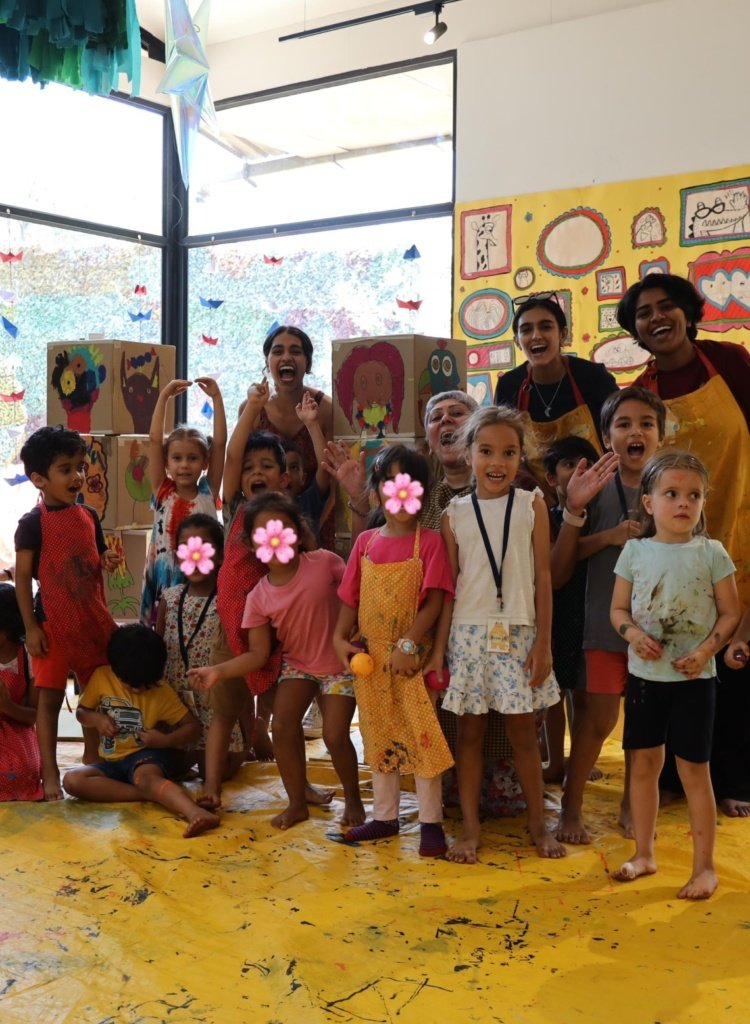
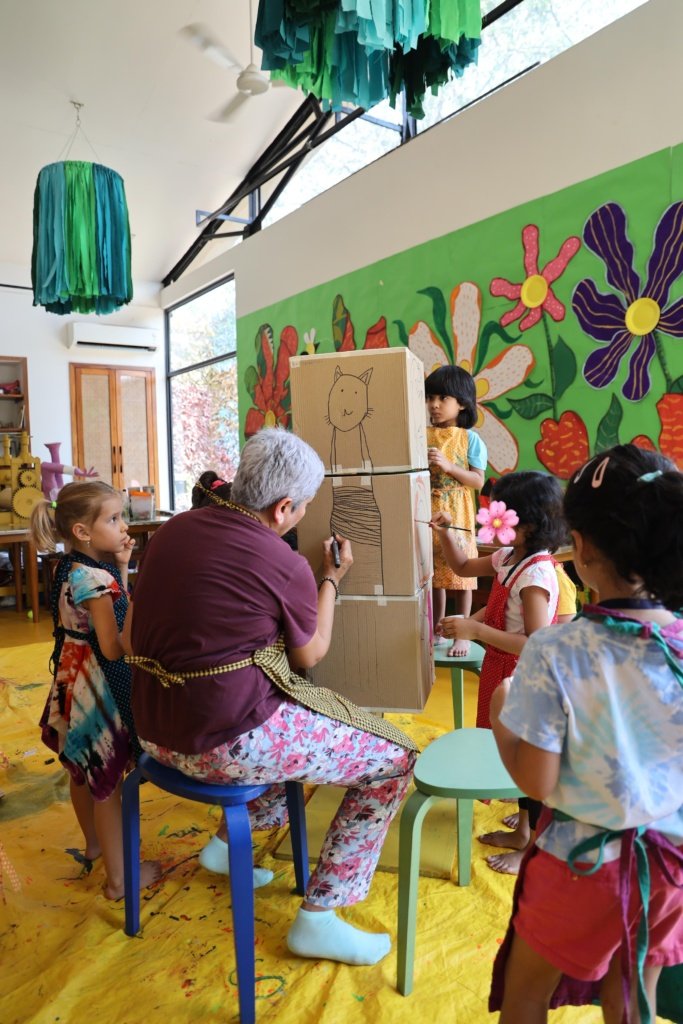
Hoot and Francesca: Storytelling with WagTales
Hoot and Francesca was a heartwarming storytelling session held in collaboration with WagTales. The session transported children into a whimsical world where a handmade snow owl puppet named Hoot took flight alongside her unlikely friend Francesca—a glowing fish crafted from the bottoms of recycled plastic bottles.
As a creature of the sea, Francesca couldn’t fly. But with the children’s help, and Hoot’s encouragement, something magical happened. Guided by Hoot’s fluttering wings and gentle voice, the children carried glowing pieces of Francesca, illuminated plastic bottle pieces—making it appear as though Francesca herself was soaring through the sky. The story came alive in their hands. This immersive experience reminded children that imagination can turn the impossible into reality, and that art has the power to transform the ordinary into something truly magical. To make the moment even more memorable, the children created their own glow-in-the-dark drawings and stickers, adding their personal sparkle to the unfolding tale.
At its heart, the story celebrated friendship, adventure, the beauty of differences, and the joy of helping one another—a reminder that with a little creativity and kindness, anyone can learn to fly.
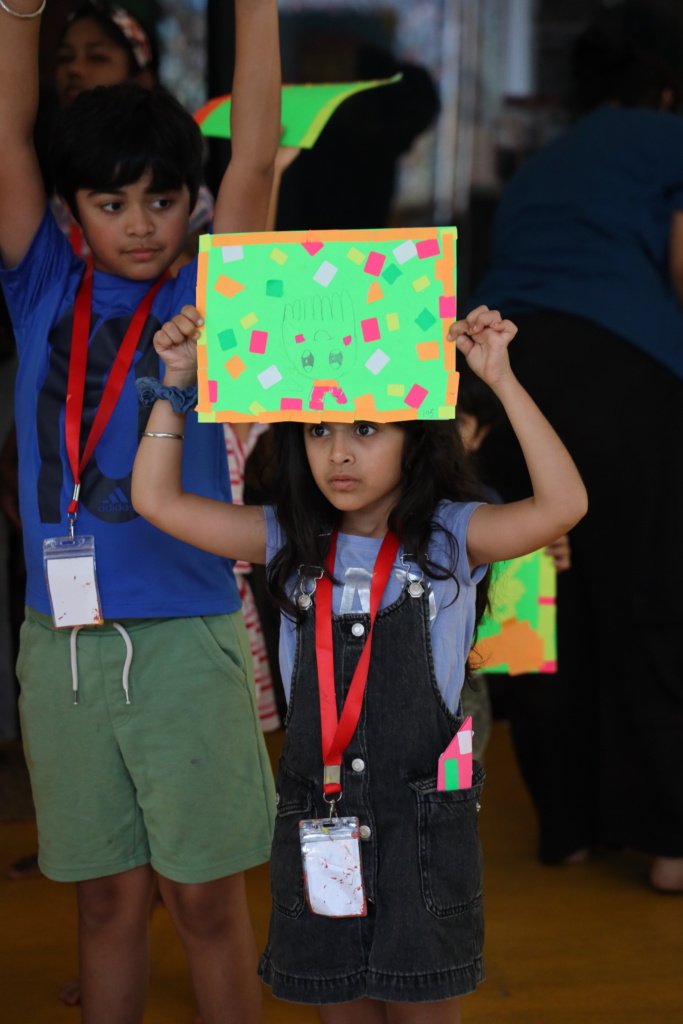
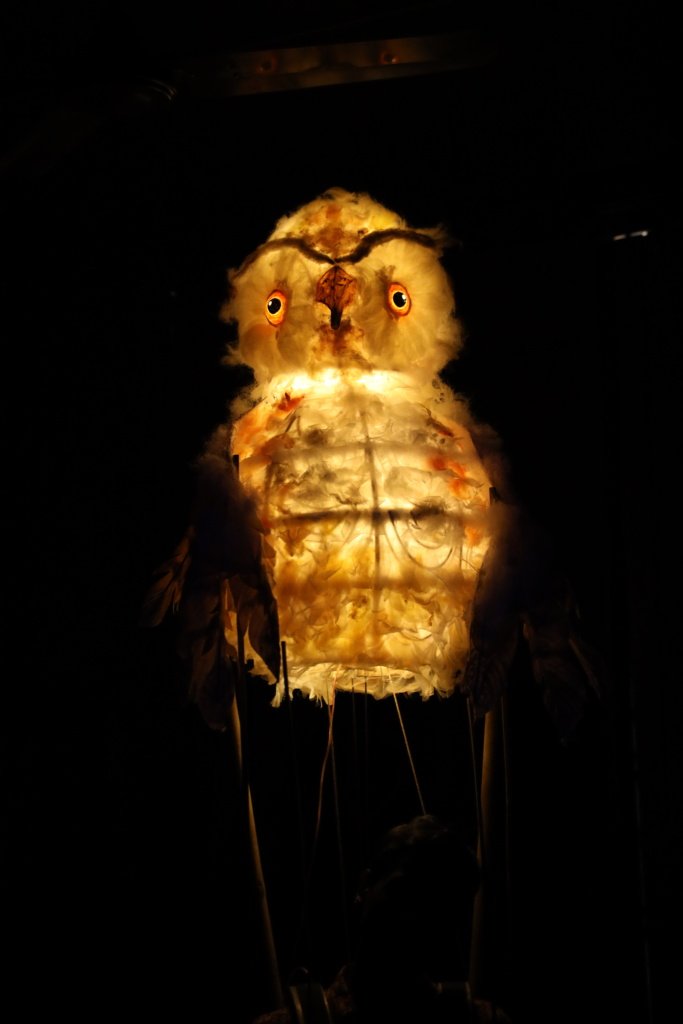
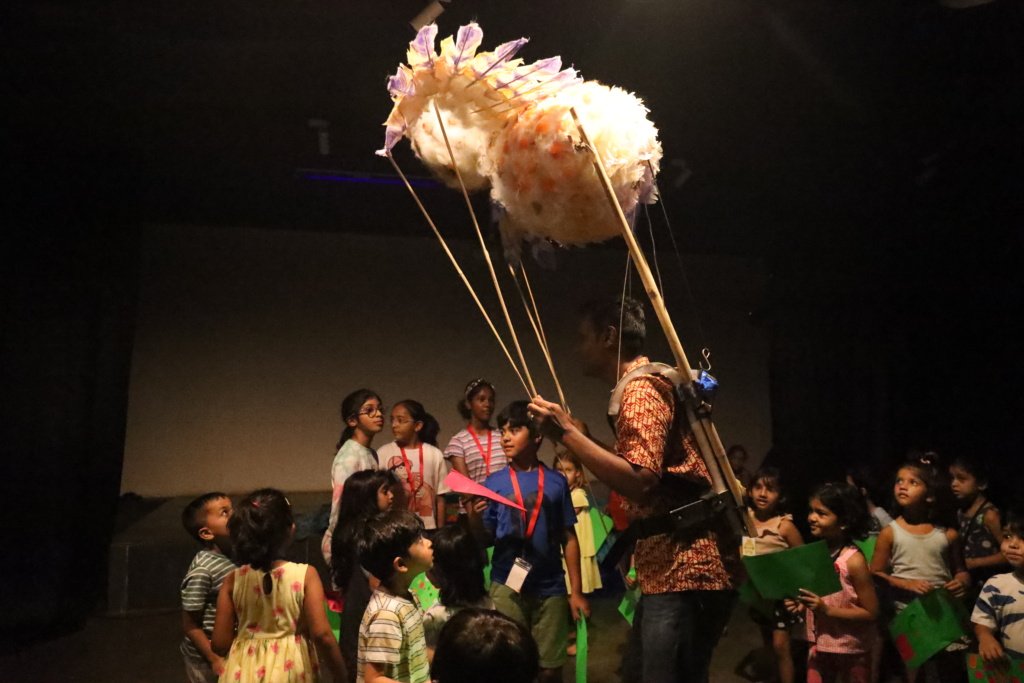
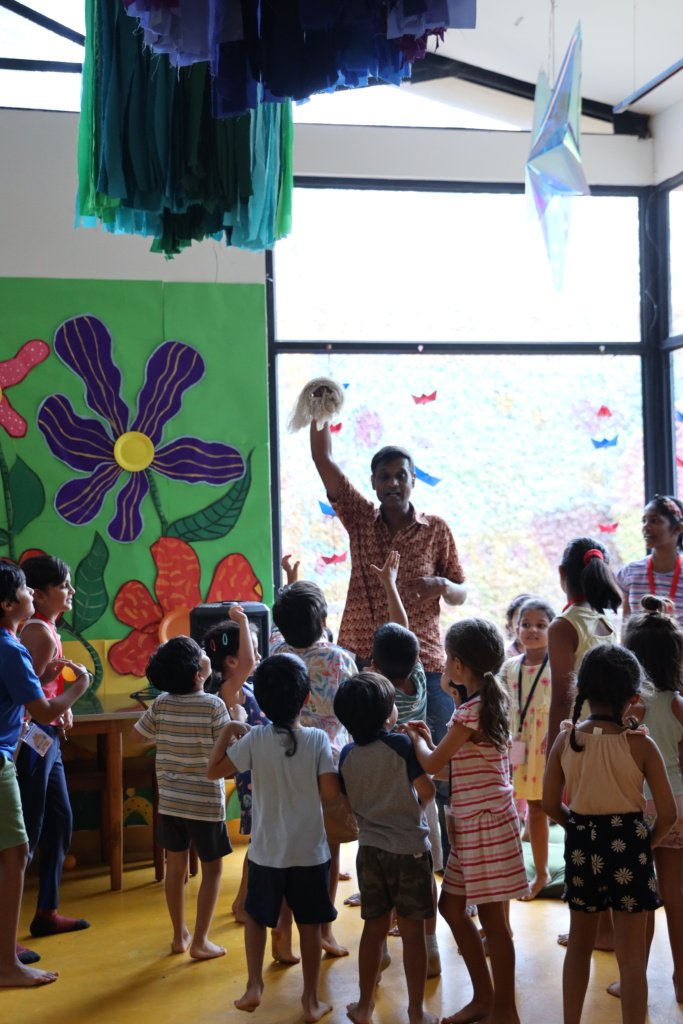
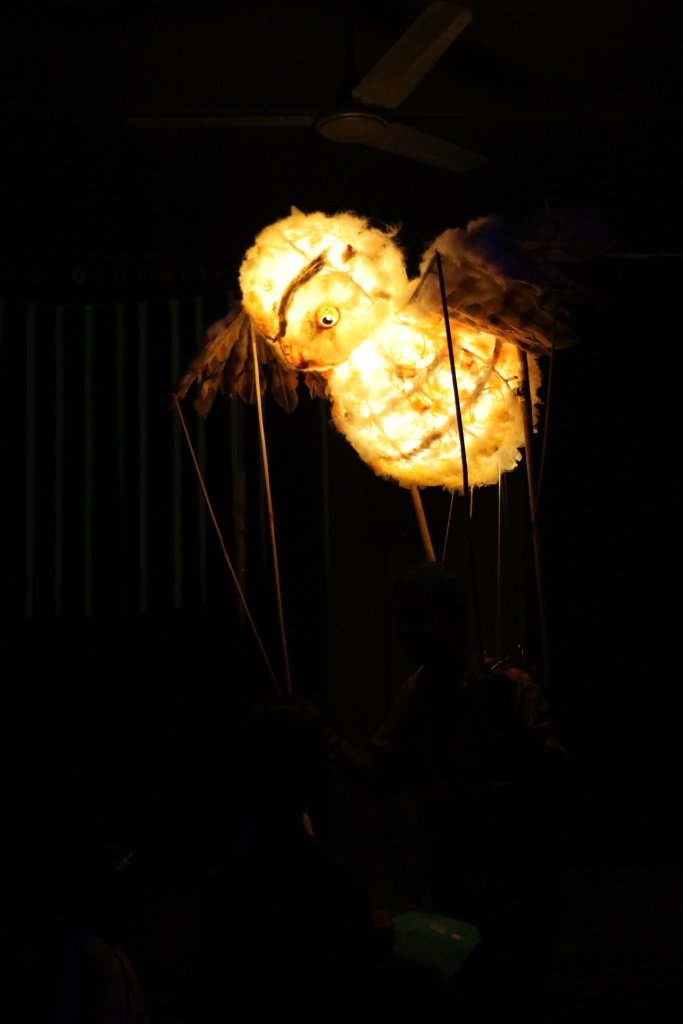
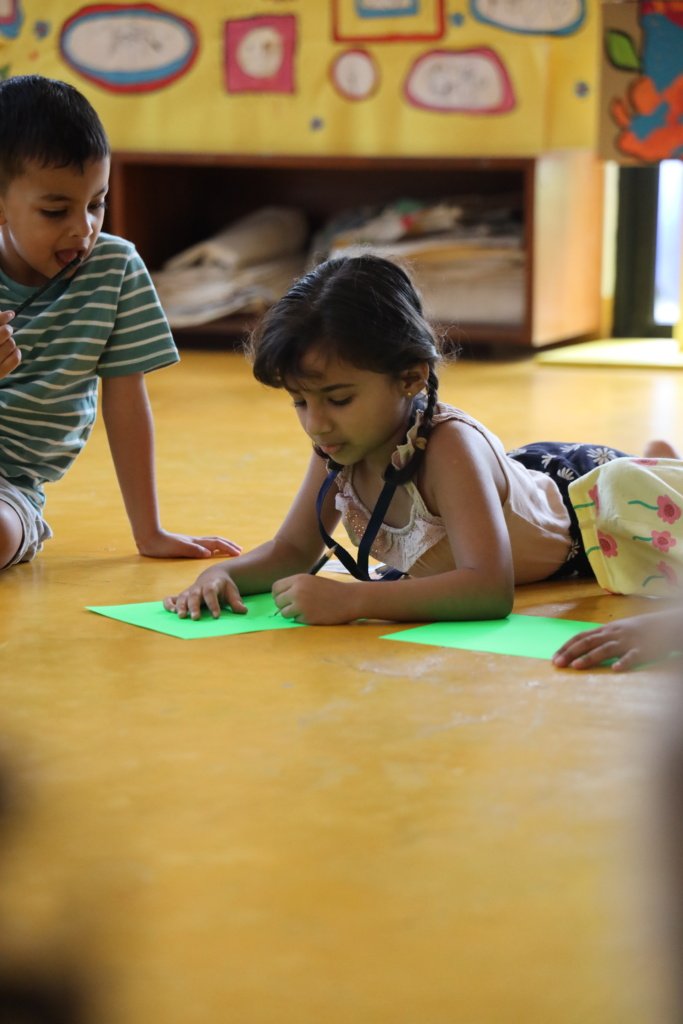
Bigo’s Birthday: Making a Cakezilla
Creating a cake full of love and imagination for the mascot was the heart of the activity called Cakezilla. In collaboration with Neville Trindade, children crafted giant “cake slices” using repurposed cardboard boxes, transforming them into imaginative, flavor-filled gifts for Mr. Bigo. Each slice represented a unique flavor and served as a metaphorical gift from each child.
The use of cardboard demonstrated how we can create toys and art from sustainable materials, celebrating the creative reuse of everyday objects and emphasizing the value of imagination over excess. This joyful act of celebration turned art-making into an invitation for emotional expression, imagination, and collective delight. The individual slices the children made were assembled to form a giant cake for Bigo — lovingly named Cakezilla.
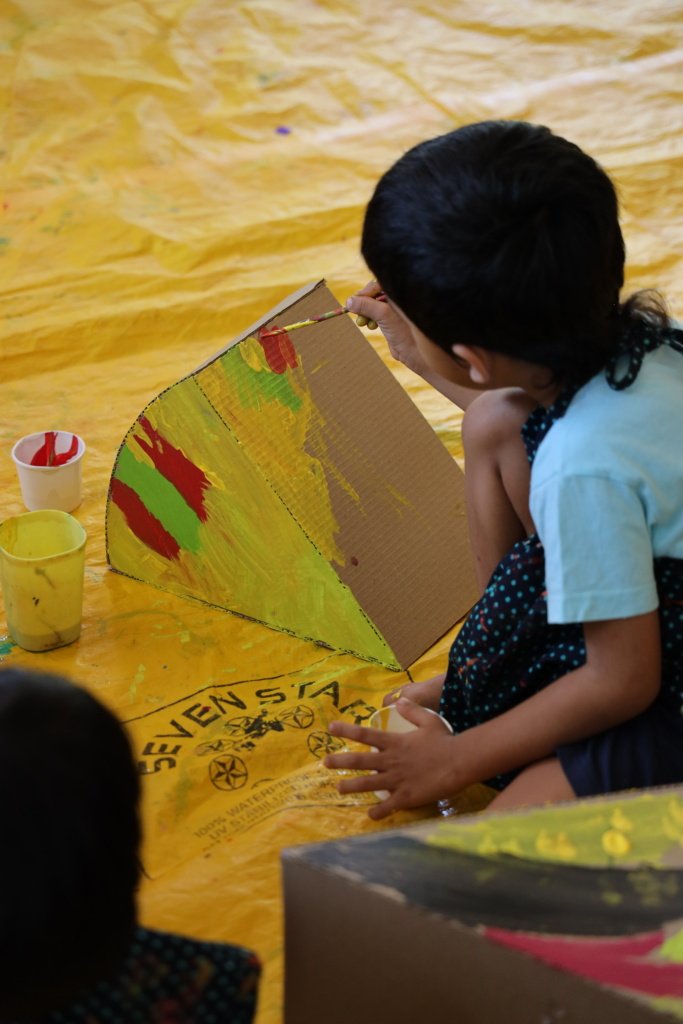
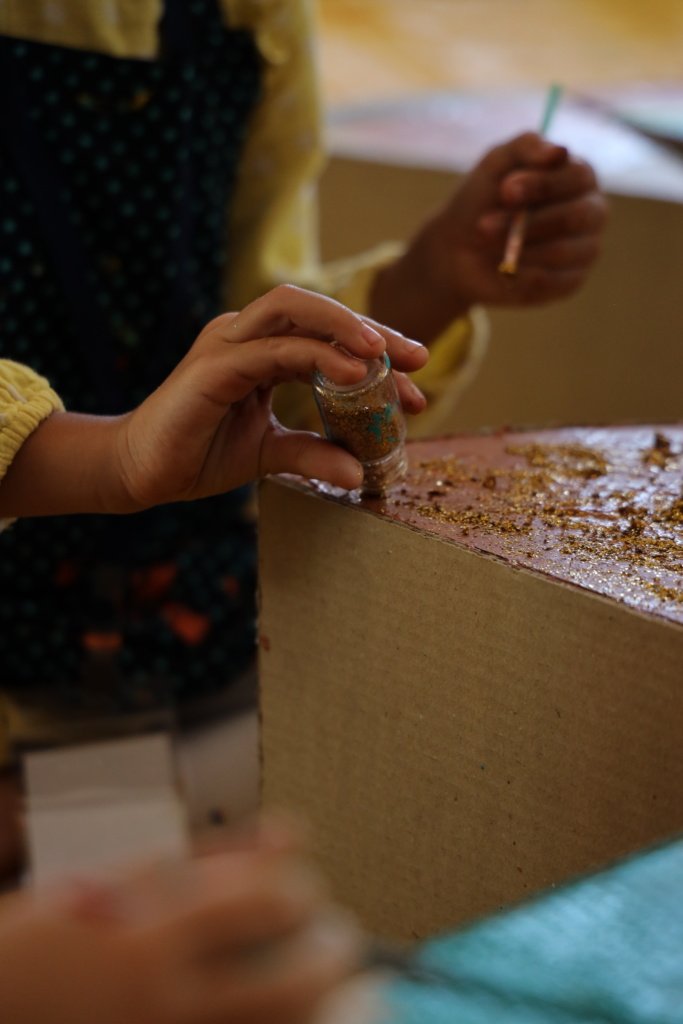
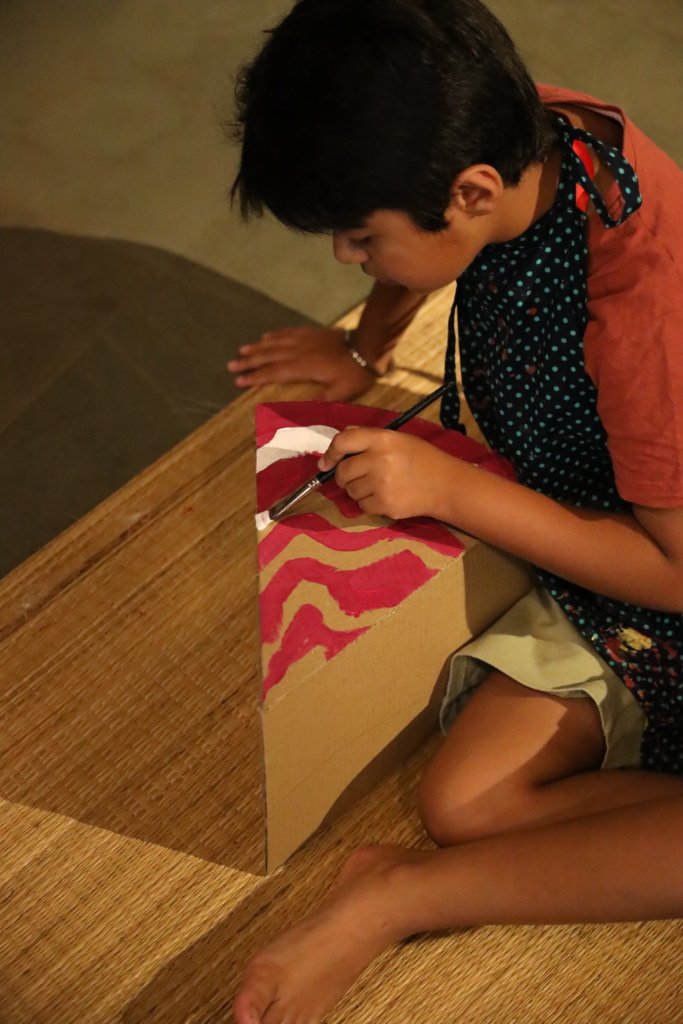
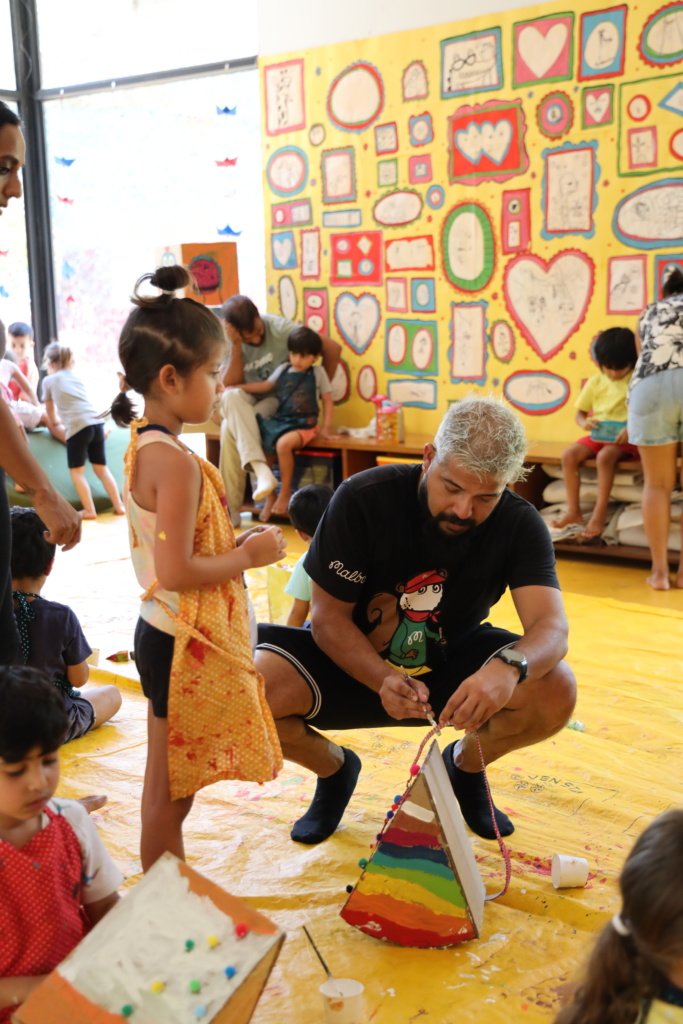

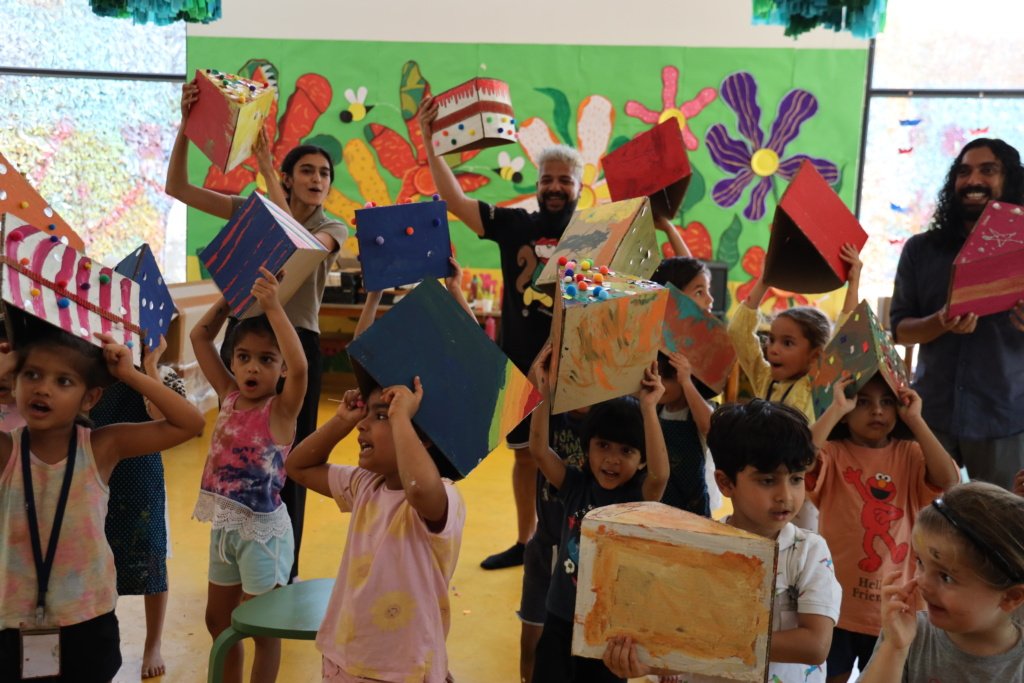
Mask Making: Embodied Transformation
On the final day, children created huge wearable masks out of cardboard in an imaginative activity called Maskimus Maximus. The story behind the activity unfolded in a fantasy world where people had begun to forget their names and, with that, their sense of identity. As their memories faded, so did parts of themselves, their bodies drifted apart, and they began to float, disconnected from who they once were.
In response, the children were given pre-cut, mismatched face parts — noses, eyes, mouths, ears and invited to piece them together to reimagine and rebuild lost characters. With every mask, they brought a floating soul back to life, giving them a face, a name, and a story once again.
This was not just about costume-making; it became a playful yet profound exploration of identity: What makes us who we are? Is it our name, our face, our memories, or the stories others tell about us? As the children sorted through the many parts and assembled them into expressive masks, they were also explored the many layers that make up a person — how different features, expressions, and details can shape how we feel and how others see us.
Through this process, the children gave form to ideas of self, empathy, and imagination. Together, their masks formed a group of faces — all different, all unique, and all reminding us that identity is something we carry, shape, and sometimes reinvent.
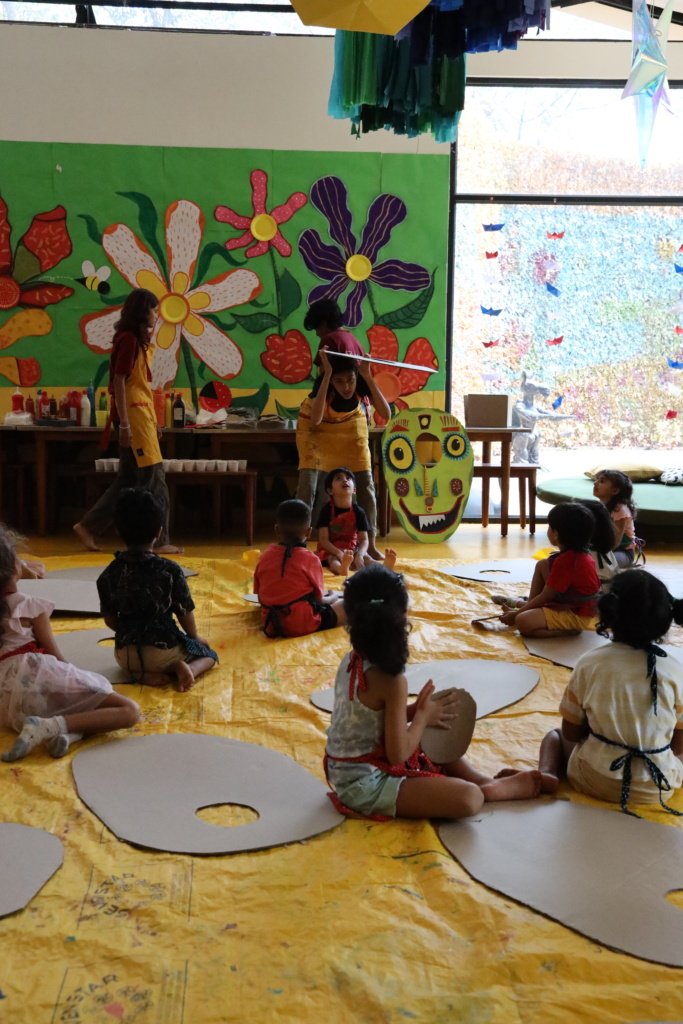
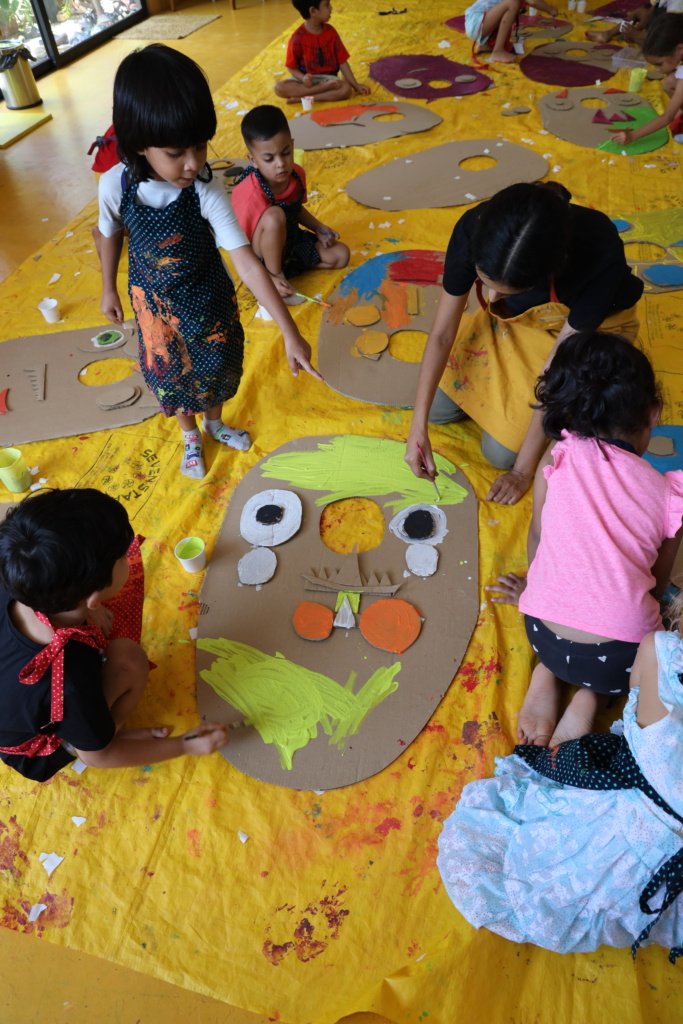
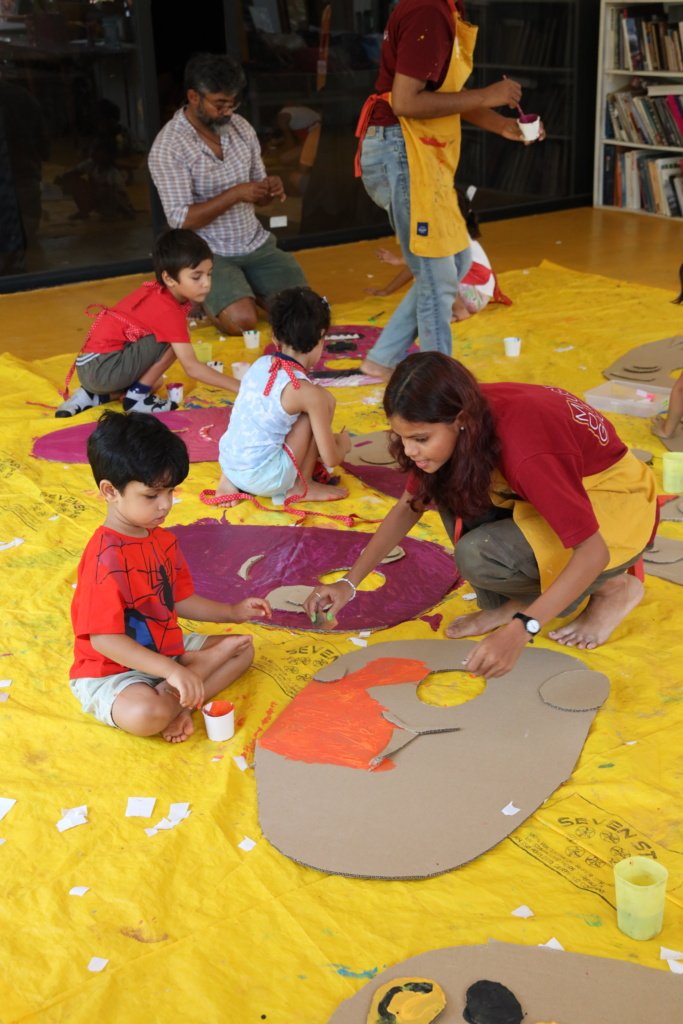
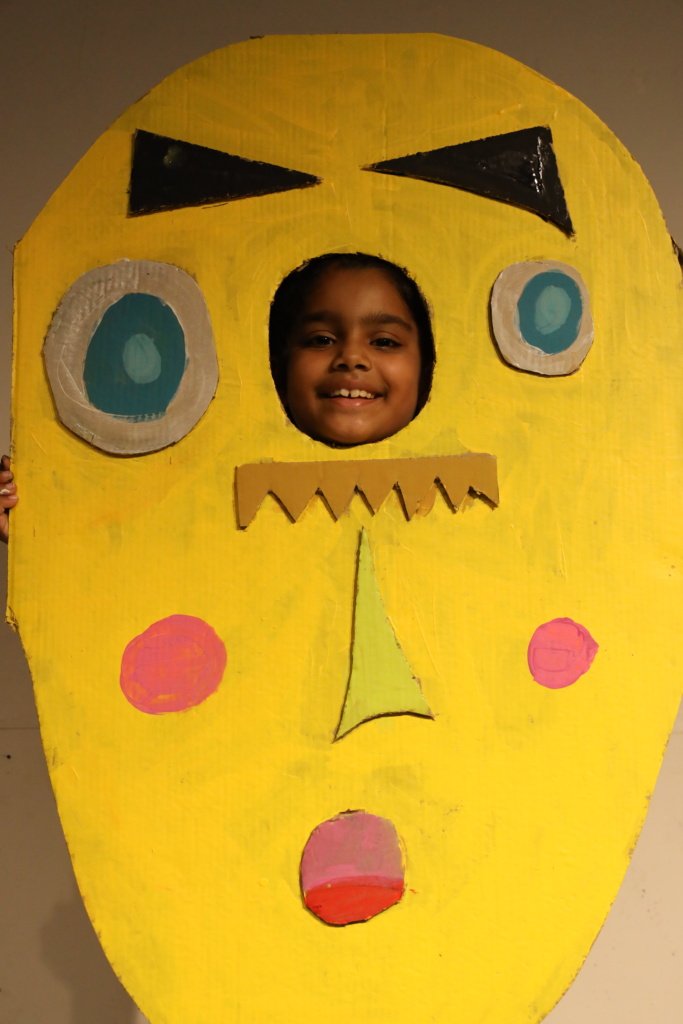
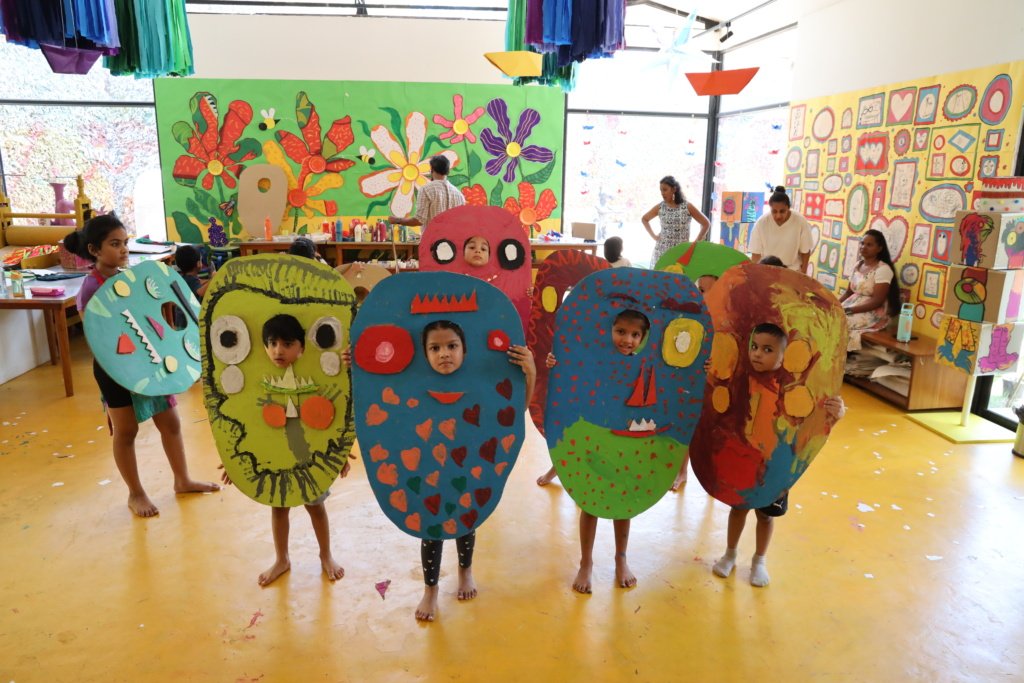
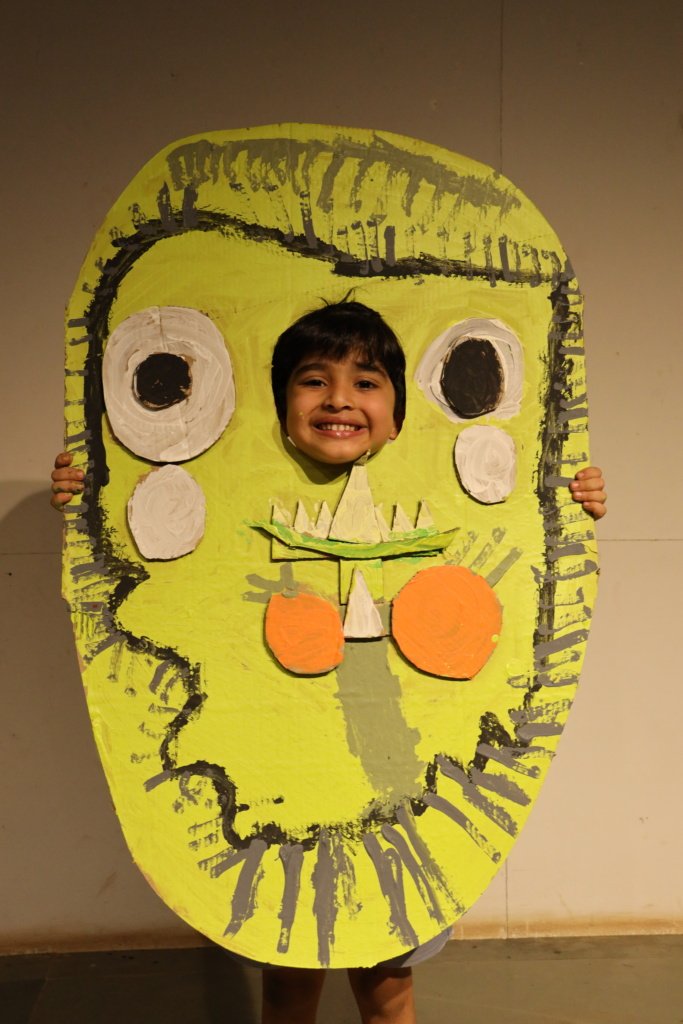
The Takeaway
For each child, The Bigonormous Art Summer Camp offered more than just art making; it became a space for emotional growth, self-discovery, and collaborative outcomes. A 5-year-old might have walked away proudly clutching their glow-in-the-dark drawing, feeling like they helped a fish learn to fly. An 8-year-old who built a creature with a mermaid tail and kangaroo pouch may have begun to see that identity doesn’t need to follow rules — it can be playful, fluid, and imagined. A 12-year-old carrying a mask from scattered parts could reflect on how everyone has their own unique face, story, and history, and that it’s okay to feel different. Through scale, storytelling, transformation, and community, the camp reminded children that art is a powerful language — one that can help us understand ourselves and each other a little better.


